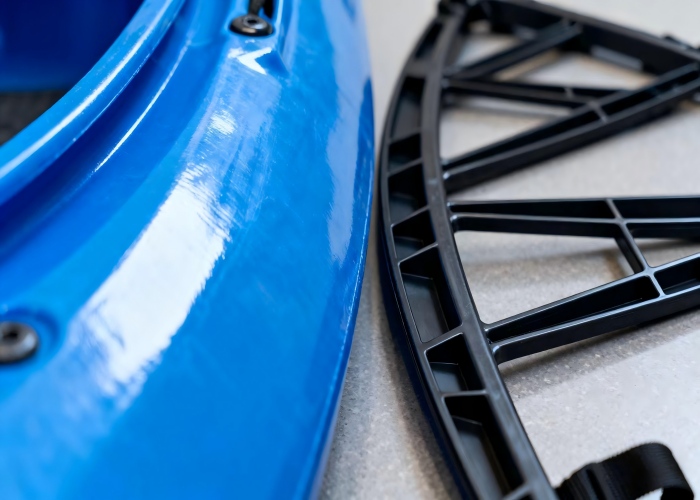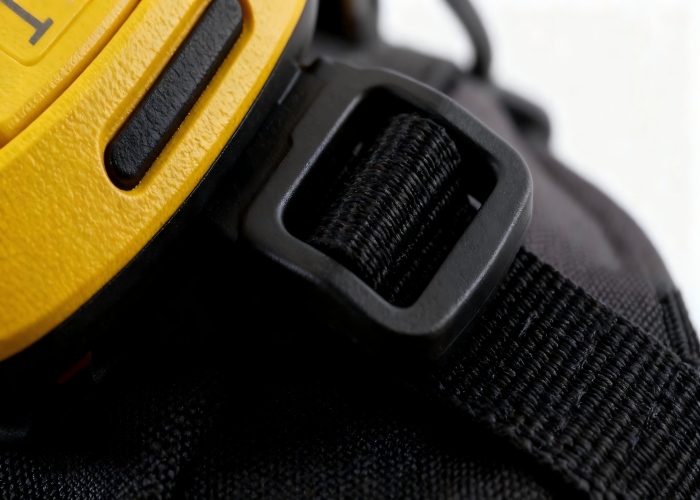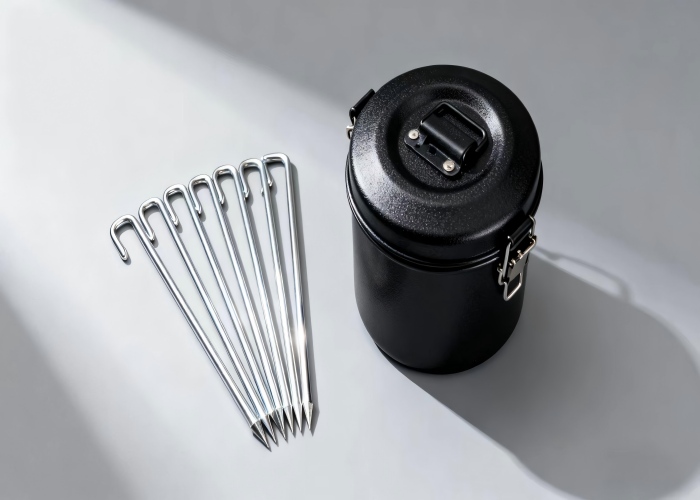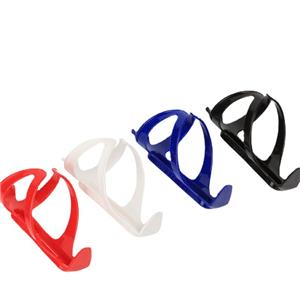How Advanced Materials Power Your Outdoor Adventures
How Advanced Materials Power Your Outdoor Adventures

Modern outdoor gear, from backpacks to tents, relies on a sophisticated symphony of engineered materials designed for maximum performance and durability.
Part 1: The Polymer Revolution - Engineering Resilience Molecule by Molecule
Synthetic polymers form the backbone of nearly every piece of outdoor equipment. Their versatility allows engineers to fine-tune properties like weight, strength, flexibility, and weather resistance with incredible precision.
The Structural Workhorses: PP and HDPE
When it comes to durability and chemical resistance, Polypropylene (PP) and High-Density Polyethylene (HDPE) are kings. These thermoplastics are found in items that need to be tough, lightweight, and resistant to impacts and moisture.
PP is semi-rigid and has excellent fatigue resistance, meaning it can be bent repeatedly without breaking. This makes it ideal for heavy-duty storage boxes, backpack framesheets (often in a laminated form for extra stiffness), and living hinge applications like the lids of containers.
HDPE is renowned for its high strength-to-density ratio. It's the material of choice for jerry cans, kayak construction, and cutting boards used in camp kitchens. Its low cost and excellent resistance to solvents make it a ubiquitous workhorse.

HDPE (left) offers impact resistance for kayaks, while PP (right) provides a rigid yet lightweight frame for backpacks.
Facing the Elements: ASA and PA6+GF20%

For components exposed to sun, rain, and physical abuse, more specialized plastics are required.
ASA (Acrylonitrile Styrene Acrylate) is a superstar in weathering resistance. Unlike its cousin ABS, ASA incorporates an acrylic elastomer that makes it virtually immune to UV radiation, preventing fading and embrittlement. You'll find ASA on the outer shells of premium GPS units, the protective casings for solar chargers, and the rugged components of climbing gear.
PA6+GF20% (Nylon 6 with 20% Glass Fiber) is a composite material where nylon is reinforced with glass fibers. This dramatically increases its tensile strength, stiffness, and heat resistance compared to standard nylon. It's used for critical structural parts like buckle frames on backpack hip belts, crampon components, and the housings for high-performance bike lights and drone mounts, where failure is not an option.
ASA (left) ensures vibrant colors and integrity under the sun, while glass-reinforced Nylon (right) provides critical strength for load-bearing components.
Clarity, Flexibility, and Legacy: PC, TPE/TPR, and ABS
This group of polymers covers a wide range of specialized functions.
PC (Polycarbonate) is the go-to material for applications requiring impact resistance and optical clarity. It's used for premium goggles, visors on climbing helmets, and the lenses of headlamps. Its ability to withstand significant force without shattering is a key safety feature.
TPE/TPR (Thermoplastic Elastomers/Rubbers) are a class of materials that blend the processing ease of plastic with the flexibility and grip of rubber. They are overmolded onto tools, trekking pole grips, and smartphone cases to provide a comfortable, non-slip surface even when wet.
ABS (Acrylonitrile Butadiene Styrene), while less weather-resistant than ASA, remains a cost-effective material for hard hat shells, various tool housings, and the internal structures of many devices thanks to its good impact resistance and rigidity.
Part 2: Metallic Might - The Skeleton of Reliability
Where plastics provide form and housing, metals provide the fundamental skeleton—the points of load transfer, the cutting edges, and the corrosion-resistant fasteners that hold everything together.
The Pinnacle of Strength: 7075 Aluminum
In the world of high-performance alloys, 7075 Aluminum is legendary. Often compared to steel in its strength, it is primarily alloyed with zinc. This makes it the preferred material for critical, weight-sensitive applications where failure is catastrophic.
Applications: You will find 7075 Aluminum in high-end trekking poles, tent poles for expedition-grade shelters, the axles and load-bearing components of technical backpacks, and advanced climbing equipment like ice axes and crampons. Its high strength-to-weight ratio is unmatched by other common aluminum alloys.

7075 Aluminum provides an exceptional strength-to-weight ratio for the most demanding components like trekking poles and ice axes.
Versatile and Ubiquitous: General Aluminium and Coated Iron
General Aluminum Alloys (like the 6000 series) are more formable and corrosion-resistant than 7075, though not as strong. They are used for a vast array of components, including water bottle lids, cookware, tent stakes, and the frames of many camping chairs.
Iron with Coating is the material for pure, unadulterated strength where weight is a secondary concern. To prevent rust, these components are almost always coated, typically through galvanization (zinc coating) or powder coating. Think of the solid jaws of a bear canister, the heavy-duty stand for a camp stove, or the internal structure of a large expedition sled.

Aluminum stakes offer a light-weight solution, while coated iron provides brute strength for security-critical items like bear canisters.
Part 3: The Seal of Comfort - Silicone and Rubber Elastomers
This category of materials is all about sealing out the elements, damping vibrations, and providing comfort through flexible, airtight, and watertight seals.
The High-Performance Standard: Silicone
Silicone is prized for its extremely wide service temperature range (from -55°C to 200°C+), excellent UV resistance, and inherent flexibility. It is non-toxic and physiologically inert, making it safe for food contact.
Applications: It is the premium material for flexible, collapsible kitchenware like travel bowls and lunch boxes. Its heat resistance makes it ideal for oven mitts used with camp stoves, and its sealing properties are used in waterproof case gaskets for cameras and GPS devices.
The Specialized Workhorses: NBR and EPDM
NBR (Nitrile Butadiene Rubber) is the standard material for fuel and oil resistance. If a piece of your gear has a hose or a seal that comes into contact with liquid fuels (e.g., for a stove or generator), it is almost certainly made from NBR. Its balance of cost and performance is excellent for these specific applications.
EPDM (Ethylene Propylene Diene Monomer) is the champion of weather and ozone resistance. It excels at sealing against water and air and remains flexible over a long lifetime, even when constantly exposed to the sun's UV rays. EPDM is commonly used for door seals on rooftop tents, gaskets on waterproof containers, and the seals on hydration bladder valves.

Silicone (left) is versatile and food-safe, NBR (center) resists fuels, and EPDM (right) provides long-lasting weather sealing.
Part 4: The Invisible Essential - Stainless Steel Fasteners
Often overlooked, the screws, nuts, bolts, and rivets that assemble gear are critical. In the harsh, corrosive environments of saltwater, sweat, and rain, standard steel fasteners would quickly rust, seize, and fail.
Stainless Steel is the universal solution. Its chromium content forms a passive oxide layer that protects it from corrosion. Using stainless steel fasteners throughout a product—from the screws holding a backpack buckle to the nuts on a camp table—is a mark of quality and durability. It ensures that the gear can be disassembled for maintenance and will not develop unsightly and weakening rust stains over years of use. This attention to detail at the smallest level is what separates professional-grade equipment from recreational toys. Stainless steel fasteners are crucial for preventing corrosion and ensuring the long-term structural integrity of outdoor gear.
Conclusion: A Symphony of Engineered Materials
The modern outdoor experience is underpinned by a silent symphony of materials science. The rugged flexibility of TPE, the unyielding strength of 7075 Aluminum, the impervious seal of EPDM, and the corrosion-free reliability of Stainless Steel fasteners all work in concert. Understanding these materials empowers consumers to make informed choices, looking beyond marketing claims to the very substance of their gear. It reveals that the true value of a piece of outdoor equipment is not just in its design, but in the calculated selection of polymers, metals, and elastomers that allow it to perform, season after season, in the world's most challenging environments. The next time you pack your backpack, you're not just packing gear—you're packing a portfolio of human ingenuity.




